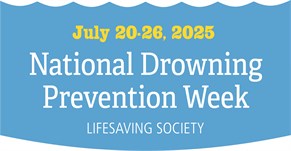• According to the @LifesavingSocietyON, drowning is fast and silent, often occurring in less than 30 seconds.
• According to the @LifesavingSocietyON research, on average there are about 450 fatal drownings each year in Canada.
• According to the @LifesavingSocietyON, most people who drown never intended to go in the water. Swimming as a recreational activity accounts for 35% of fatal drownings.
• According to the @LifesavingSocietyON’s research, drowning is the third-leading cause of injury related death for Canadian children under 14 years of age, and statistics show that children under 12, boaters, young men and seniors 65+ are at the greatest risk.
• Drowning doesn’t always mean death, but non-fatal drowning can result in lifelong health issues.
• According to @LifesavingSocietyON’s research, for every fatal drowning in Ontario, there are nearly four non-fatal drownings serious enough to require an emergency department visit.
• According to @LifesavingSocietyON’s research, over one third of victims were swimming alone when they drowned.
• According to @LifesavingSocietyON’s research, in 29% of boating-related fatalities, the person was alone.








